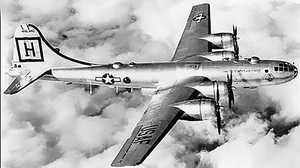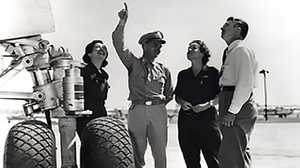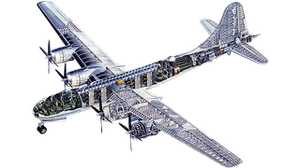The Women Airforce Service Pilots
1937 July
Amelia Earhart disappears over the Pacific.
1938 September 23
Jackie Cochran wins first place in the Transcontinental Bendix Race.

1939 June
The Civilian Pilot Training Program (CPTP) is established by the U.S. government. The program provided pilot training across the country and allowed for one woman to be trained for every ten men.
September 1
Germany invades Poland.
September 3
France and Great Britain declare war on Germany.
1940 September 28
Jackie Cochran writes to Eleanor Roosevelt suggesting the establishment of a women's flying division of the Army Air Forces.
1941 June
Jackie Cochran becomes the first woman to ferry a bomber across the Atlantic.
June
Women are banned from participating in the Civilian Pilot Training Program.
December 7
Japanese attacks the U.S. fleet at Pearl Harbor.
1942 March
Jackie Cochran takes 25 American women pilots to Britain to fly with the British Air Transport Auxiliary.
September
Following a proposal submitted by pilot Nancy Harkness Love to the Ferry Command of the Army Air Forces, the Women's Auxiliary Ferrying Squadron, or WAFS, is established. Twenty-five of America's top women pilots will begin ferrying aircraft throughout the U.S.
1943 February 6
The WFTD increases its goal for the number of women pilots to graduate that year from 396 to 750.
February 21
Avenger Field in Sweetwater, Texas, welcomes its first class of women pilots.

February
The WFTD school in Houston, Texas closes.
March 21
Cornelia Fort becomes the first woman to die on active duty for the United States when another pilot accidentally clips the wing of the plane she is flying.
August 5
The Women's Auxiliary Ferrying Squadron (WAFS) merge with Jackie Cochran's training program to form the Women Airforce Service Pilots (WASP).
September 30
Representative John Costello of California introduces the WASP militarization bill.
December 17
The WASP wings are made available in time for the graduation of Class 43-W-8.
1944 February
The WASPs are finally issued with Santiago Blue uniforms.

March 24
Senators Joseph Hill (Alabama) and Harold Burton (Ohio) submit a resolution calling for the appointment of female pilots and aviation cadets into the Army Air Forces.
May 29
"Time" article titled "Unnecessary and Undesirable" calls the WASP experiment expensive and claims men could have been trained more quickly.
June
The congressional bid for WASP militarization fails. It was the first time during World War II that legislation supported by the Army Air Forces was voted down.
July
Rumors begin circulating in the press that the WASP program is about to be disbanded.
October 1
General Hap Arnold issues a memorandum to WASP Director Jackie Cochran stating that because of the changing war situation the WASPs would "soon become pilot material in excess of needs."

October
The WASPs receive notification from WASP Director Jackie Cochran and General Hap Arnold that their unit would be disbanded in December.
November 1
Brigadier General Bob Nowland writes a memo describing the hardships that will be caused by deactivating the WASP program.
December 7
General Hap Arnold addresses the final graduating class of WASPs.
December 20
The WASP program is deactivated.
1977 October 19
The Senate votes unanimously to grant WASP veterans' recognition.
November 3
The House votes to give the WASPs veteran status.

November 23
President Carter signs a bill into law "Officially declaring the Women's Airforce Service Pilots as having served on active duty in the Armed Forces of the United States for purposes of laws administered by the Veterans Administration." 1979
March 8
The Department of the Air Force authorizes official discharges for WASPs.

May
The Air Force issues the first honorable discharges for women serving in the WASP during the Second World War.
September 15
Jackie Cochran establishes the Women's Flying Training Detachment (WFTD) under chief of the Army Air Forces, General Hap Arnold.
November 17
The first class of 28 recruits from the Women's Flying Training Detachment reports to the Houston, Texas, municipal airport.
November
The WAFS fly their first mission, taking Piper Cubs from Lock Haven, Pennsylvania, to Mitchell Field, New York.








